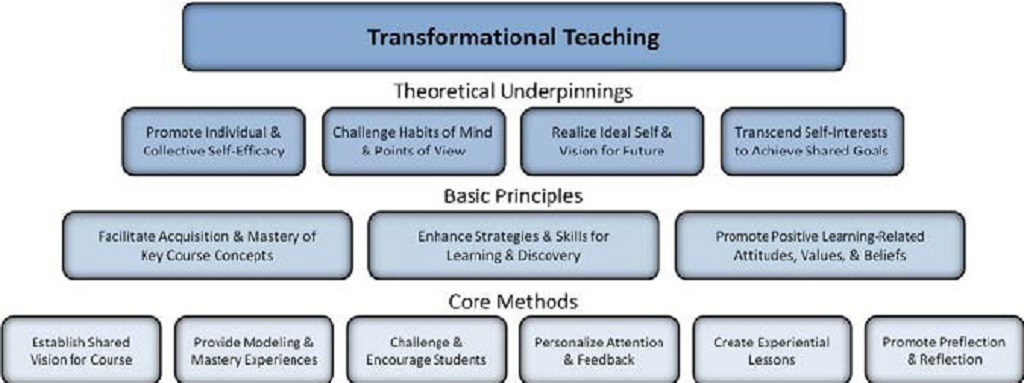Are you an educator who is always looking for innovative ways to engage your students and create a lasting impact on their learning journey? If so, you may have come across the concept of transformational teaching. In this article, we will delve into the theories behind transformational teaching, exploring how this approach can revolutionize traditional classroom dynamics and foster a love for learning. This content is brought to you by Dldxedu.com.
The Power of Transformational Teaching
Transformational teaching is not just about imparting knowledge; it’s about inspiring and empowering students to become active participants in their own education. This approach goes beyond conventional methods, focusing on holistic development and nurturing critical thinking skills. So, what are the key theories that underpin transformational teaching?
1. Maslow’s Hierarchy of Needs: Building a Strong Foundation
At the core of transformational teaching lies Abraham Maslow’s Hierarchy of Needs. This theory emphasizes the importance of addressing students’ fundamental needs—physiological, safety, love and belonging, esteem, and self-actualization—before meaningful learning occurs. Educators create a safe and supportive classroom environment to lay the groundwork for transformational experiences.
2. Vygotsky’s Zone of Proximal Development: Guided Growth
Lev Vygotsky’s Zone of Proximal Development (ZPD) complements transformational teaching by focusing on the potential for growth within a student’s cognitive range. Educators identify the ZPD for each student, tailoring instruction to scaffold learning and encourage independent thinking. This theory promotes collaborative learning and nurtures a sense of accomplishment.
3. Freire’s Critical Pedagogy: Empowering Through Dialogue
Paulo Freire’s Critical Pedagogy advocates for an emancipatory education that empowers learners to question societal norms and engage in critical dialogue. Transformational teaching draws from this theory by encouraging students to analyze and challenge the status quo, fostering a deeper understanding of complex issues and promoting social awareness.
4. Gardner’s Theory of Multiple Intelligences: Customized Learning
Howard Gardner’s Theory of Multiple Intelligences recognizes that students possess diverse cognitive strengths. Transformational teaching integrates this theory by offering a variety of learning experiences that cater to different intelligences, promoting holistic development and allowing each student to shine in their unique way.
5. Deci and Ryan’s Self-Determination Theory: Fostering Intrinsic Motivation
Edward Deci and Richard Ryan’s Self-Determination Theory aligns with transformational teaching’s goal of inspiring lifelong learners. This theory emphasizes autonomy, competence, and relatedness as drivers of intrinsic motivation. Educators employing transformational teaching strategies nurture students’ sense of agency, competence, and connection to the subject matter.
Transforming the Classroom Experience
Imagine a classroom where students are not passive recipients of information but active participants in their learning journey. Transformational teaching brings this vision to life by incorporating these theories into practical strategies:
- Socratic Questioning: Encouraging thought-provoking discussions and posing open-ended questions that stimulate critical thinking and self-discovery.
- Project-Based Learning: Fostering collaboration and problem-solving skills through hands-on, real-world projects that align with students’ interests.
- Peer Teaching: Enabling students to teach their peers, reinforcing their understanding and boosting their confidence.
- Personalized Learning Plans: Tailoring lessons to students’ needs and learning styles enhances engagement and comprehension.
Embracing the Transformation
In conclusion, the theories of transformational teaching offer a profound shift in the way education is approached. Educators can create a learning environment that fosters personal growth, critical thinking, and intrinsic motivation by integrating concepts from influential theorists like Maslow, Vygotsky, Freire, Gardner, and Deci and Ryan. So, are you ready to embark on a journey of transformational teaching and unlock the full potential of your students? As you explore these transformative pedagogical approaches, you might also discover innovative ways to crowdfund your college education, allowing students to access education in new and empowering ways.
FAQs
Q1: Is transformational teaching suitable for all age groups?
Absolutely! While the methods may vary, the core principles of empowerment and critical thinking can be adapted for learners of all ages.
Q2: Can transformational teaching be combined with traditional teaching methods?
Certainly! Transformational teaching can complement traditional methods, enriching the overall learning experience.
Q3: How can I apply transformational teaching in a large classroom setting?
Utilize group activities, peer teaching, and technology to facilitate engagement and personalized learning even in larger classes.
Q4: Are there any successful examples of transformational teaching in practice?
Yes, many educators have reported improved student engagement and deeper learning outcomes through transformational teaching methods.


